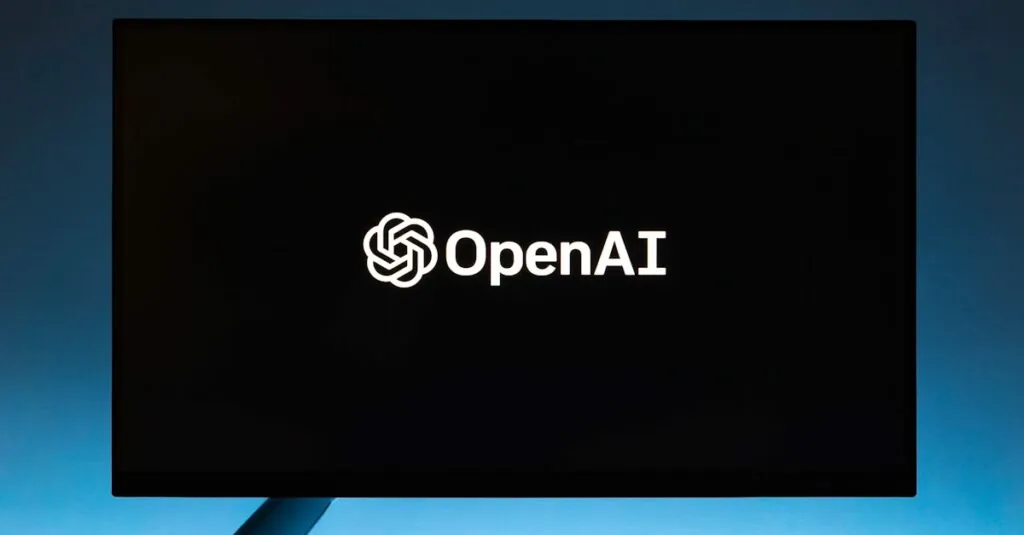Table of Contents
ToggleIn the fast-paced world of tech startups, a logo isn’t just a pretty picture—it’s the first impression that can make or break a brand. Think of it as the digital handshake that screams “We mean business!” or at least “We know what we’re doing!” With countless new companies vying for attention, a standout logo can be the difference between being remembered or lost in the abyss of the internet.
Importance Of Tech Startup Logos
Logos play a crucial role in establishing a tech startup’s brand presence. They represent the company’s values, mission, and vision while making a memorable impact.
Brand Identity
Brand identity hinges on a logo’s design elements. Color, typography, and shape combine to create a unique visual language. Consistency in logo usage fosters recognition among customers. Logos encapsulate a startup’s ethos, helping to differentiate it from competitors in a crowded market. Brands that invest in thoughtful logo design often cultivate loyalty and trust. A well-crafted logo can convey innovation, reliability, and professionalism, aligning perfectly with a tech startup’s goals.
First Impressions
First impressions matter significantly in the tech industry. A logo serves as the initial point of contact for potential customers. Simple, clean designs can instantly communicate the core essence of a startup, making it more approachable. Effective logos resonate with target audiences, sparking interest and curiosity. When a logo stands out, it attracts attention amidst the competition, encouraging further exploration. Ultimately, a memorable logo leaves a lasting impression, shaping perceptions of the brand even before learning more about its offerings.
Elements Of Effective Tech Startup Logos
Effective tech startup logos share key characteristics that enhance brand recognition and memorability. These elements include simplicity and versatility, which contribute to a logo’s overall impact.
Simplicity
Simplicity stands at the forefront of logo design. Clear and uncluttered logos create immediate recognition and easy recall. Intricate designs may confuse, while minimalist logos communicate a brand’s message more effectively. Color selection plays a vital role in maintaining simplicity; a limited palette fosters a sleek appearance. For instance, notable brands like Apple and Google exemplify how straightforward designs resonate with audiences. Minimalistic logos are versatile, adapting smoothly across various platforms and mediums. Ultimately, a simple logo enhances usability, ensuring that it remains effective in various contexts.
Versatility
Versatility ensures that a logo remains impactful across diverse applications. Adaptable logos maintain visual integrity in different sizes and formats. They perform well on both digital screens and print materials, making them essential for brand consistency. A great approach involves testing the logo in monochrome and color to confirm clarity. Flexibility in design allows a logo to thrive on social media, business cards, and promotional materials. Successful examples include Mastercard, whose interlocking circles look recognizable everywhere. Prioritizing versatility guarantees that the logo’s message remains strong, regardless of its presentation.
Trends In Tech Startup Logos
Tech startup logos reflect current design trends that enhance brand recognition. Companies increasingly adopt styles that resonate with their target audiences and embody their values.
Minimalist Designs
Minimalist designs dominate the tech startup logo landscape. These logos use simple shapes and limited color palettes to create impactful visuals. Companies like Apple and Google excel at minimalist logos that convey their message clearly. A clutter-free design helps potential customers recognize the brand quickly. Icons generated from straightforward elements foster engagement, allowing startups to stand out in saturated markets.
Abstract Symbols
Abstract symbols gain traction among tech startups, showcasing creativity and innovation. Companies leverage unique geometric shapes and non-literal imagery to represent their missions. These symbols often evoke feelings and ideas, sparking interest in potential customers. By stepping away from traditional representations, startups can create logos that are open to interpretation. Such designs encourage a deeper connection with the audience, promoting brand loyalty and curiosity.
Case Studies Of Successful Tech Startup Logos
Examining successful tech startup logos reveals effective design strategies. Not only do these logos capture attention, but they also convey brand values.
Notable Examples
Airbnb’s logo, known as the “Bélo,” symbolizes belonging and community. This design’s fluid shape fosters connection and warmth, making it memorable. Similarly, Slack utilizes a simple, colorful hashtag that enhances recognition across digital platforms. Dropbox’s logo, a clean representation of a box, suggests simplicity and usability, appealing to users seeking straightforward solutions. These logos exemplify how effective visual language translates abstract concepts into relatable symbols.
Lessons Learned
Crafting a logo involves various strategic considerations. Clarity in design significantly aids brand recognition and recall. Additionally, versatility across applications enhances a logo’s effectiveness, evidenced by Mastercard and its adaptive circles. Balancing creativity with simplicity ensures logos resonate with target audiences. Engaging with audience preferences matters; logos should reflect company values and evoke emotions, fostering loyalty and trust. Ultimately, these elements work together to create lasting impressions that are essential for competitive advantage in the tech landscape.
Common Mistakes To Avoid
Designing a logo for a tech startup involves navigating common pitfalls that can hinder brand recognition. Recognizing and avoiding these mistakes enhances the impact of the logo.
Overcomplication
Overly intricate designs can confuse potential customers. Complex logos might lose clarity when scaled down, making them difficult to recognize. Distinctive branding requires simplicity, allowing the logo to communicate effectively at all sizes. A cluttered logo fails to make a memorable impression, risking brand recall. Companies such as Google and Apple demonstrate that minimalism often captures the essence of a brand without unnecessary details. Stripping away complexity can lead to a logo that resonates more deeply with the audience.
Lack Of Relevance
Logos must reflect the startup’s core values and mission. Irrelevant design elements can create disconnects between the company and its audience. For example, a tech company using floral imagery may confuse consumers about its offerings. Choosing symbols and colors relevant to the industry improves communication and engagement. Ensuring that the logo aligns with the brand’s identity fosters stronger connections with customers. An effective logo serves not only as a visual identifier but also as a meaningful representation of the company’s goals and aspirations.
A tech startup’s logo is more than just a visual symbol; it’s a powerful tool that shapes brand identity and customer perception. By focusing on simplicity and versatility, startups can create logos that resonate with their target audience and effectively communicate their core values.
In an ever-evolving tech landscape, staying aware of design trends and audience preferences is essential. A well-designed logo not only captures attention but also fosters loyalty and trust, making it a crucial investment for any startup. Ultimately, a memorable logo can set the foundation for long-term success in a competitive market.







